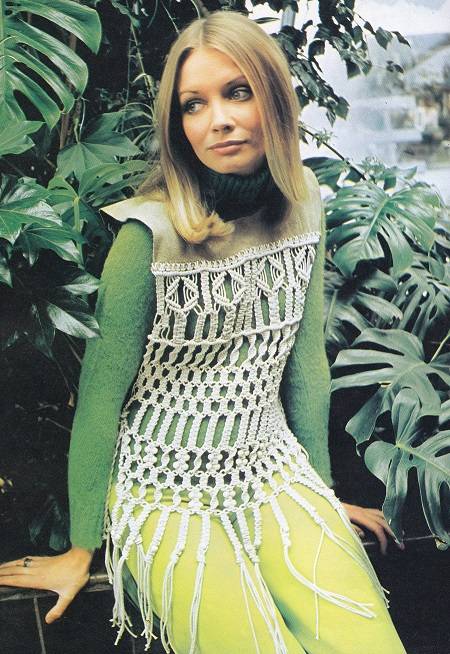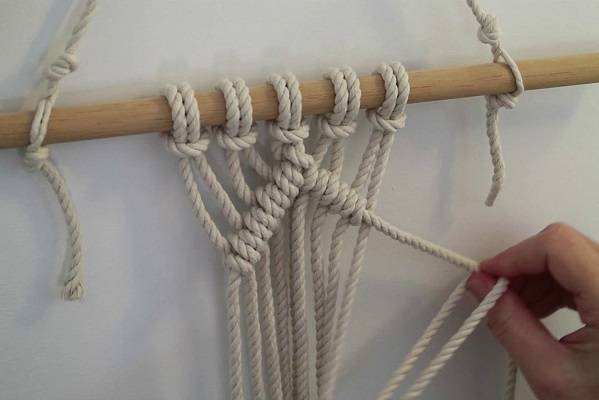ORIGINS:
The Art of Knots and Macramé
What is macramé and where did it come from? Read on for a quick overview including macramé projects ideas you may not have thought of

Innovation & Quality
Developing and supplying premium-quality, sustainably grown, consumer products
100% Natural
Organically Grown and Ethically Sourced
hemp and other natural fiber products
Shipping
We offer fast shipping
Your order out within 1-3 days
Wholesale
Visit our wholesale portal to register or login to your account
Where to Buy High-quality Macrame Supplies? At Hemptique!
MACRAME DEFINITION
MACRAME HISTORY


MACRAME VARIETY: CHINESE KNOTTING
WHAT IS MACRAMÉ MADE OF?
The criteria for choosing theright material for your project are based on the following qualities youshould consider:
- Strength: The cord's strength largely depends on the manufacturing process – whether the individual thread used to create the material was twisted or braided. Some of the strongest are hemp, jute, leather, and nylon.
Texture: You do not want a rough material on the skin, especially if you make macrame jewelry. Hemp is an excellent material as it tends to soften with use. Cotton and leather are also good options.
Stiffness: The material you use should be flexible enough to bend. Thinner cords are usually more flexible, while thicker ones tend to be stiffer. If you make jewelry, hemp and cotton are both soft and very flexible. If you plan to use leather, make sure to use less than 2 mm in width.
- Diameter: When buying a macrame cord, you will find the thickness indicated in mm. Choose the thickness carefully, especially if you use buttons, beads, and other decorations.
macrame timeline
- Medieval Times: It is a widely accepted theory that Moor sailors contributed to the popularity of macrame art during their voyages from North Africa to Europe. They needed ways to stay busy and avoid going crazy on long days at sea. Since they already had the skill by trade, they used a lot of junk rope lying around to make beautiful pieces of art; they also made belts and hammocks. Over time, they invented more and more complex knots. Traveling to different ports helped to spread skill and knowledge across the world. Then they introduced macrame first to Spain, France (in the 15th century), and Italy (in the 16th century).
Victorian Era: During the reign of Queen Victoria, macrame was extremely popular and reached its peak. It was a well-received hobby for women of all classes, from ladies-in-waiting to middle-class housewives, which homes were adorned with beautiful pieces of tablecloths, doilies, and curtains.
- 1970's America: As a symbol of rejection of mass-produced and unethical manufacturing, macrame found its way to home décor, sweaters, purses, and even flip-flops. The massive hippie movement in this decade created the perfect base for the macrame popularity explosion. It was an obvious, effortlessly chic choice for many people. The artists experimented with various techniques to create different products, including clothing, accessories, plant hangers, home textiles, and more. Still, moving till the end of the 1970s and during the 1980s, the art became outdated and seen as kitsch.
21st century: With the emergence of the new bohemian style, macramé became more and more popular and made a steady comeback. Fiber arts with a feminine tradition like macrame sparked the interest of women whose lifestyle was focused on personal growth and self-care. Thanks to Instagram, Etsy, Pinterest, and other e-commerce and social networks, it has become a global trend. Experiencing some kind of renaissance, macrame is considered trendy formost people and does not show any sign of stopping. What is more, youhave many amazing places and YouTube tutorials where you can master the art of macrame for free and decorate your home with some awesome modern pieces!

8mm Hemp Rope Coil
3 strand twisted hemp rope. 20 meters length. Available in black or natural.
$39.99
TYPES OF MACRAMÉ KNOTS
TYPES OF MACRAMÉ CORD
- Rope: The most common option for macrame projects is rope. Several strands are twisted around one another, giving it extra strength and thickness. There are several types available, including twisted three-ply and braided six-ply ropes. Macrame rope creates distinctive and thick knots and will not easily start untwisting.
- String: A string is composed of many thin fibers that are twisted into a single strand. As a result, it is much softer than macrame rope.
With string, you can create tighter and much smaller knots. Yarn: Typically used for weaving or knitting, yarn can also be used for macrame. It is usually made of wool and industrial hemp (but not always) and can have several strands twisted together.
- Waxed Cord: A waxed cord is usually used for macrame jewelry and is typically smaller in diameter. It is covered in beeswax to make it water-resistant and stronger; the cord can be plied or unplied. It comes in various colors, although wax tends to make the shades darker.
WHAT CAN YOU MAKE WITH MACRAME?
- Boho feathers
- Keychains
- Wall hangers
- Macrame garland
- Plant and jar hangers
- Hammocks
- Necklaces, bracelets and
earrings - Christmas ornaments
- Produce bags
- Belts
- Watch bands
- Curtains
- Bouquet wraps
- Coasters
- Headbands
- Bookmarks
- And More – you are only
limited by your creativity.









